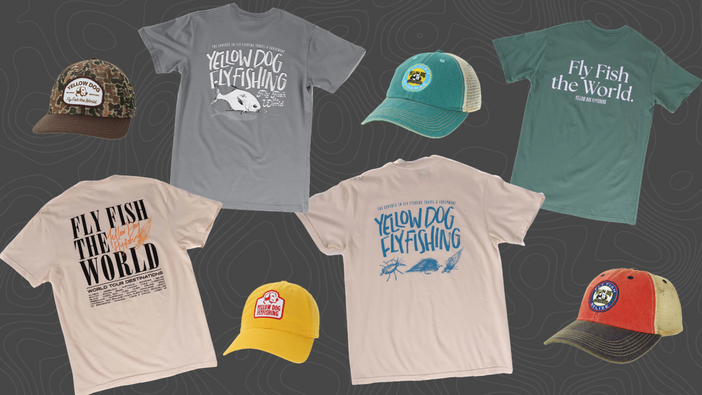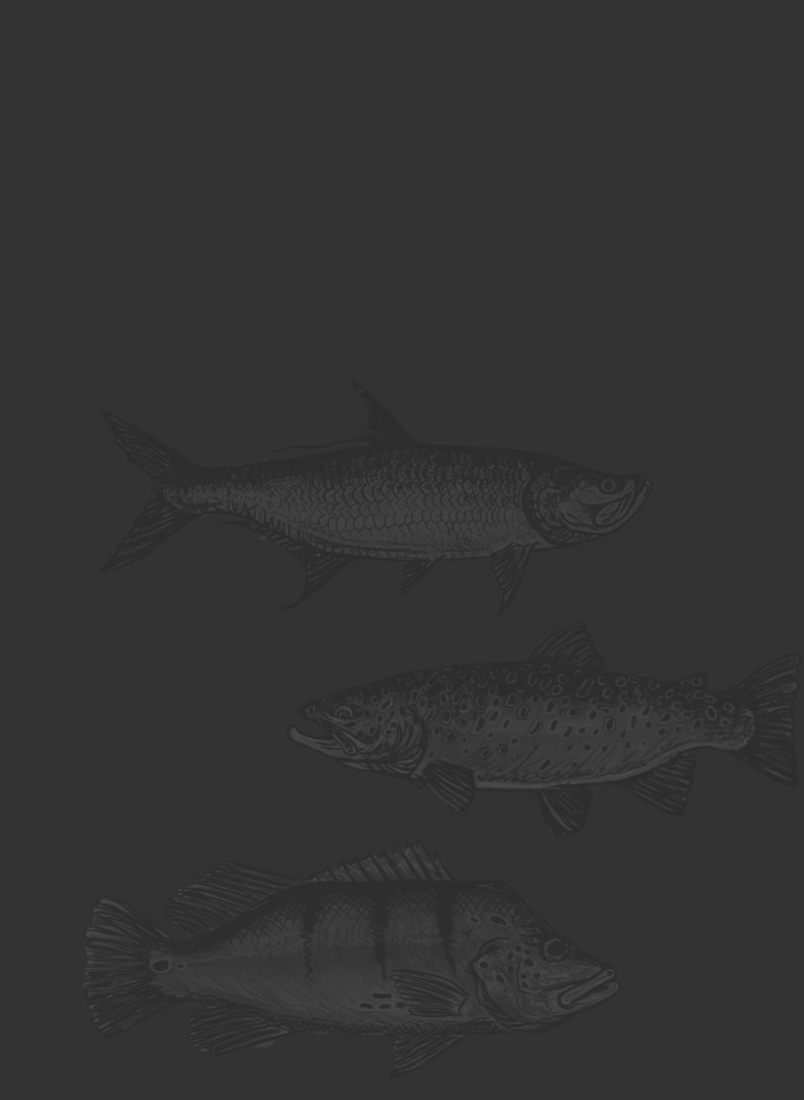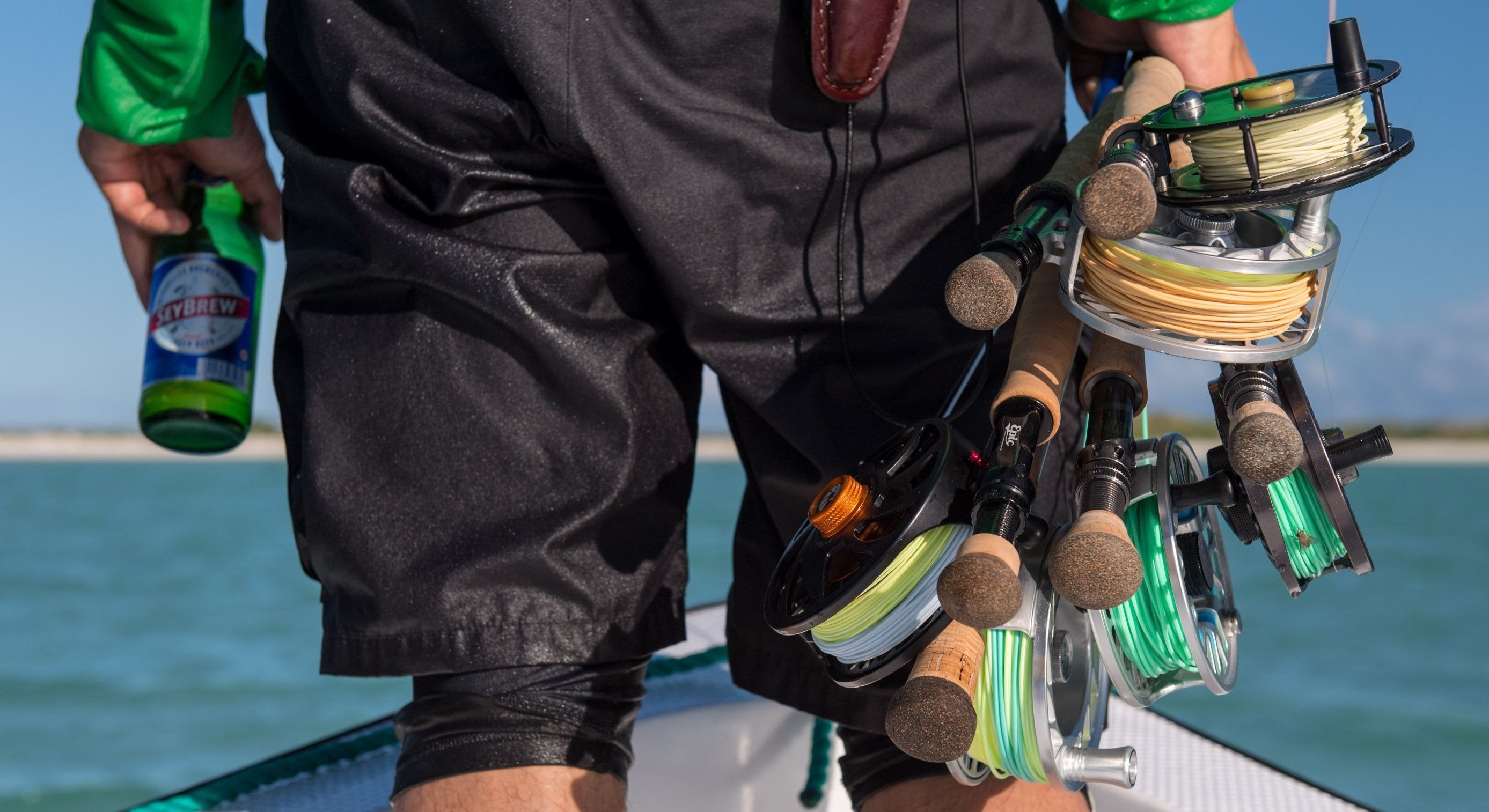This past September Jim Klug and Ian Davis traveled to Mongolia to fish for the largest salmonid on earth: taimen.
The duo fished hard for seven days and left with not only some spectacular photos of monster taimen but also some perspectives on life, what it means to detach, unplug and recharge - and of course, some insider tips on catching big fish and what it takes to have a great trip to Mongolia. Ian gave us the backstage pass into the trip of a lifetime.

The Mongolian backcountry is one do the most remote corners of the earth I have ever experienced. The term "off the grid" applies to this destination on every level.

Once you depart your hotel in Ulaanbaatar for the charter flight into the vast backcountry all connectivity fades away. There is a calming sense when embarking on a trip with no connectivity, which is rare nowadays.
Can we treat ourselves to an uninterrupted plunge into the natural world without work severing our experience?
There are a few remaining exotic destinations where you are genuinely removed from all electronic distractions, and camping with Mongolian River Outfitters is free from all power, cell service, and Wi-Fi.
In Mongolia, their preferred backcountry accommodations are Gers (or otherwise known as yurts or large round tents). These structures stand up to wind, rain, and snow. Many Gers are artistically enhanced with cultural geometric designs that are aesthetically pleasing. The hand-painted wood frames and rich tapestries adorn the thick felt walls. Interior latticework and poles provide endless places to dry, hang and store your gear, waders, and clothing.
The nucleus of the structure is a wood-burning stove, which will keep you toasty warm during the crisp Mongolian nights. Raised cots, heavy woolen blankets, and your sleeping bag will ensure you rest well after a hard day of slinging big rods and flies.
Just be sure to duck down low as you pass through the small entry door.
Vast tundra gives way to arid buttes, rolling hills, and rugged mountains. Intermittent canyons engulf the rivers and shut out the horizon.
Whether you are rolling through an expansive valley or snaking down a canyon, you will constantly be reminded how large and diverse our planet it - there are still untouched swaths of land that remain pristine.
It's comforting to feel this openness after all the harsh realities of the overdeveloped urban landscapes many of us call home.
Traveling to such desolate areas reboots the mind and calms the soul.

We found the crew and guides to be incredibly friendly and welcoming. I was blown away with how enthusiastic many of the younger guides were. They had a deep passion for all aspects of fly-fishing from tackle to tying flies. The guides were the first generation to guide foreign anglers on the rivers where their families have lived for many generations. Outfitting is a relatively new business and profession in Mongolia.
The Mongolians that live in the backcountry are excited about the economic opportunities and learning about foreign cultures, meeting people, and consuming everything that has anything to do with fly-fishing. It's always refreshing to fish with guides that love their jobs.
The food was tasty, healthy, and hearty. Often, when participating in backcountry multi-night floats, in remote areas, the food can be sparse and mysterious. We always had freshly made soups with lunch, which warmed us during a few of the cooler, windy days.
Then freshly cooked meats and vegetable combinations were served with amazing caviar, bread, wine, beer, water, soda, and Gingas Vodka. Dinners consisted of quality meats, pasta, rice, and stews.
Breakfast was the meal not to miss. With a long day on the water, fueling up with tons of protein was vital having enough energy to cast a heavy rod and fly all day. Lots of fresh fruit, cheeses, eggs, meats, multi-grain toast, and of course hot coffee got you going in the morning.
There was not a lot of downtime once we embarked down the river for our seven-day float. The days were full from re-packing gear each day, to gearing up for fishing, eating, sleeping and actually fishing hard all day long. We fished from sun up to sun down most every day. When floating around 120 miles, you need to keep pace to knock it out in seven days. During the evenings we cleaned up, had dinner, and went to sleep.
I did read a few books about Mongolia. I always find it interesting to read about the region I’m traveling.

We were perfectly prepared and ready for the trip. The Yellow Dog Mongolian pre-trip planning guide was spot on! There were a few colors of flies that worked well, and it would have been nice to have some weighted versions of those, but we made it work.
Having lots of headlamps, flashlights, and lamps is essential to life on the river. There is zero ambient light, and minimal provided lights, so be sure to bring headlamps and backup light sources.

Fishing for Taimen is mystifying for many hardcore trout anglers. We are used to fish feeding based on hatches, air and water temperatures, and the seasons. It can be mentally challenging when you are in such a foreign land with a fish you do not get much time to target. You pound the bank with your fly perfectly for hours, and then you hit a hot streak of fish. You try to assimilate the information to create more consistent takes, but it rarely comes to fruition.
We had many peaks and valleys of fishing action. The taimen really wanted the foam cyclopes popper style fly when we were floating. It was hard to not throw the big streamer as a brown trout enthusiast. I kept assuming that would outproduce any other fly, when in fact, the dry fly poppers did the best. They were easily the most fun to fish. They were light and easier to cast than the waterlogged streamers, and the eats were much more visually stimulating.

These taimen flies, the red and white cyclops poppers resemble saltwater snook and tarpon flies used in the backcountry, or a Pole Dancer type bug. It moves lots of water and pops which attracts the fish. We also used segmented streamers in olives, tans, whites, and then red and white was a good fly color combo. The guides also liked flashy, long, and thin flies.
The hook must be beefy and strong - nothing under a 3/0 super-strong gauge hook!

Every single fish provided a memorable take. Since taimen fishing is quality over quantity, you might only have between one and six eats a day. Even a smaller taimen is around two feet long, so every fish is special. We did have a few larger fish hunt down our waking topwater fly, track it for a good distance, and then engulf the eight-inch-long popper.
Often, the fly would pull out of the fish’s mouth. A taimen’s mouth is hard like a tarpon, so it can be difficult to drive the hook home. A few times the fish was simply biting the fly tightly and the hook never set in the fish’s jaw. When the fish got close to the boat or in the net, it would open its large mouth, and the fly would pop out. The fish was never actually hooked, but rather just never let go of the fly. Then if you lost the fish a second cast, or leaving the fly in the water, kept the fish actively feeding as if it was fired up and now had to bite something.
We hooked numerous fish three and four times before landing them. The largest fish was hooked three times. The fly pulled loose each time. This was even after very hard, multiple hook sets. The monster never came back for a fourth eat. It left us deflated, but now the desire to return for that elusive 50 incher burns deep within my angling soul.

Any place you can float for 120 miles and only see one or two man-made structures is amazing. We did see a Russian town off in the distance, but that was it.
Being so remote, surrounded by wonderful and caring people, and fishing for the world’s largest trout makes Mongolia one of the top “bucket list” destinations, no matter how much we do not like that term.
I cannot wait to go back to detach from our busy lives, hang with the guides and crew, and then to conquer massive taimen.
I will be much better prepared for my second trip to the land of Genghis Khan.
+ Listen to this WAYPOINTS Podcast: Charlie Conn - Taimen Fishing and the Draw of Mongolia
Related Articles:





























